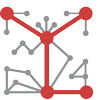The Internet of Things has arrived
While some continue to write it off as futuristic, they are not acting any different from skeptics we had when mobile technologies were maturing. We all know what happened next – it took only couple of years for smartphones to change our lives. And, if mobile brought ‘change’, IOT will be nothing short of a transformation. Only a couple of years ago, impact of IOT didn’t seem much. But, then, almost instantly, mobile, web 2.0, and connectivity technologies became ubiquitous and inexpensive. Technologies like Wi-Fi, NFC, RFID, and sensor tags now make economic sense for widespread use. These technologies when added to everyday products enable massive data exchanges, and make it possible for brands to deliver dynamic services.
According to Cisco Systems, 15 billion connected devices already exist, and the number will reach 50 billion by 2020. Intel is even more bullish and predicts 200 billion connected devices by 2020. But, another number from Cisco puts things in better perspective, i.e., 98% of all physical devices will be part of the Internet of Things ecosystem. While most people only think about the obvious IOT candidates such as cars, consumer electronics, and appliances, these make up a very small percentage of trillions of consumer products sold every year. The biggest opportunity for marketers is in dumb products that will become part of the IOT ecosystem via smart packaging and software.
Marketers in the thick of it
Like any digital disruption, marketers are at the center of this radical shift. With IOT, brands will have unprecedented access to consumer preferences and behaviors, enabling them to interact with consumers in completely new ways. It’s like a steroid shot of customer and product insight, and brands that fail to leverage this data will become casualties of the IOT age. It will not be enough to simply reimagine products and services; most companies would need to redefine their business strategy. These new strategies need to be relevant in a world where everyone and (more importantly) everything is connected and digitized. From smart toothbrushes, diapers, and watches to smart thermostats, coffee makers, and garage door openers – every object will provide an opportunity to improve user experience by capturing consumer interaction and understanding patterns. Brands not just get a clear view of the buyer’s journey, they can also understand how products are being used, which features are valued the most, how it reached the household, how the product fits into the device ecosystem, and what other products and services can be sold?
Direct access to consumer and it’s cost
With the tools currently available, marketers already know a lot about their consumer – what they buy, when, how and where. What they don’t know today is ‘why’ someone is buying what they are buying. IOT answers that question, creating tons of opportunities for brands to improve products, experiences, and more importantly, relationship with the consumer. Direct access to consumer will be the highest priority as marketers begin to leverage IOT data. It will allow marketing teams to engage in highly contextual communication with consumers, which would have much higher conversion rates than any other channel that we know today.
But, direct access to consumers comes at a price. As consumers give up their privacy, the expectations from brands would go through the roof. And, brands cannot afford to sit on the fence, for it is one of the greatest opportunities that IOT endows – opportunity to build deeper human relationships. It is not going to be easy, though. Connected objects and consumer interaction points will grow at such a rapid speed that it will be extremely tough for brands to get a handle on the situation. From consumer perspective, it is a big trade-off – they are giving away their privacy in return for convenience and value. Brands that don’t take this trade-off seriously, and fail to deliver, will lose consumer trust quickly.
Marketing evolution and the partner ecosystem
IOT will have a huge impact on how we develop and execute marketing campaigns. A new way of thinking has to evolve as people, devices, and infrastructure get connected. This thinking needs to be focused on predicting consumer’s next action, instead of traditional campaigns that simply respond to consumer actions. For business executives, at first, this new ecosystem can be extremely puzzling. For instance, what are they supposed to do when there is data coming out of a cereal box, and a toothbrush? Or, what does it mean when a mattress, coffee machine, washer, car, and security system are all connected, talking to each other, and generating marketing insights? Well, at this time, no one really has good answers to those questions. Only when the IOT ecosystem is more mature, marketers will get a better sense of all the dynamics at play. But, one thing is for sure – there will be a lot of excitement and truck load of opportunities for marketers.
As more and more IOT devices are enabled, companies would need to combine multiple data sources, and derive a deeper understanding of the world consumer lives in. Web services will be the glue in this connected world. A brand’s ability to collaborate in an IOT ecosystem, enable a connected API economy, and build data relationships with other brands will decide who eventually succeeds, or fails. A retailer, for example, would need to work with the fridge manufacturer to give consumer the option to connect the fridge to retailer’s mobile app, enabling the fridge to add milk to the shopping cart. In this scenario, retailer would need focused campaigns to first convince consumers to connect the app, and then drive ongoing sales of essential and ancillary products.
Data and analytics – challenges of the IOT era
Most companies are struggling to fully leverage the amount of data they currently collect. Their struggles are going to have a snowball effect in the IOT era. One of the most daunting tasks for organizations will be to effectively collect, combine, clean, and crunch the enormous volume of data that the connected world will produce. Just take an example of capabilities available on the web, where it is already possible to digitally engage your customers with highly targeted messaging. But, most companies are only marginally leveraging these capabilities. Now, think about a connected analog world with digital data coming off of every device and object that consumer owns, and you begin to realize the uphill task for brands. With IOT, Big Data and Analytics are only going to become more relevant, along with predictive algorithms that will help uncover consumer actions and events proactively.
But, making use of data is just one of the challenges. Perhaps, the biggest challenge will be the inability of algorithms to predict human nature. Algorithms can find patterns, and patterns form when there is some sort of consistency. But, human emotions can impact actions in so many ways that to call out anomalies, we will need even more data to understand person’s real behavior, and how it impacts interconnected systems. So, expect the demand for complex data analytics technologies to increase exponentially in the IOT age.
Marketing teams – new structure and responsibilities
The structure of marketing teams needs to evolve to fully exploit opportunities in the IOT age. Most marketing departments are split in silos with internal teams and external agencies focused on specific areas. For example, brands can no longer afford to have brand, retail, and customer service teams working in isolation. Every single team member has to align with a singular goal of becoming consumer-centric (which, btw, has been around forever). But, never before has our consumer lense zoomed-in so closely to an individual’s life. This type of targeting requires close work with data scientists and marketing technologists every step of the way, which is pretty much nonexistent today across brand and marketing teams. Very soon, it will become the most important competitive differentiator.
IOT lives at the junction of enterprise technology and marketing. The CMO and marketing function will have greater responsibility of making best use of technology platforms to generate demand and brand awareness. The CMO cannot afford to simply rely on CIO or CTO for implementing the real-time IOT infrastructure. The marketing team has to be involved in the process to make sure systems are built, implemented, and made available the right way. From consumer perspective, privacy concerns are the biggest threat to IOT adoption. Since, marketing teams will be involved in building partnerships and data relationships, they will be held equally responsible if there is a lapse in data security. IOT is a network of objects, people, and systems, and data will be stored at many different locations. Marketers need to ensure that multi-tier privacy and security control framework is built within the IOT infrastructure to manage and protect consumer data at every interaction point.
How do you think IOT impacts marketing?
Let’s discuss in comments, or you can contact me directly on twitter @jasmeetio or my website – Jasmeet Sawhney.



